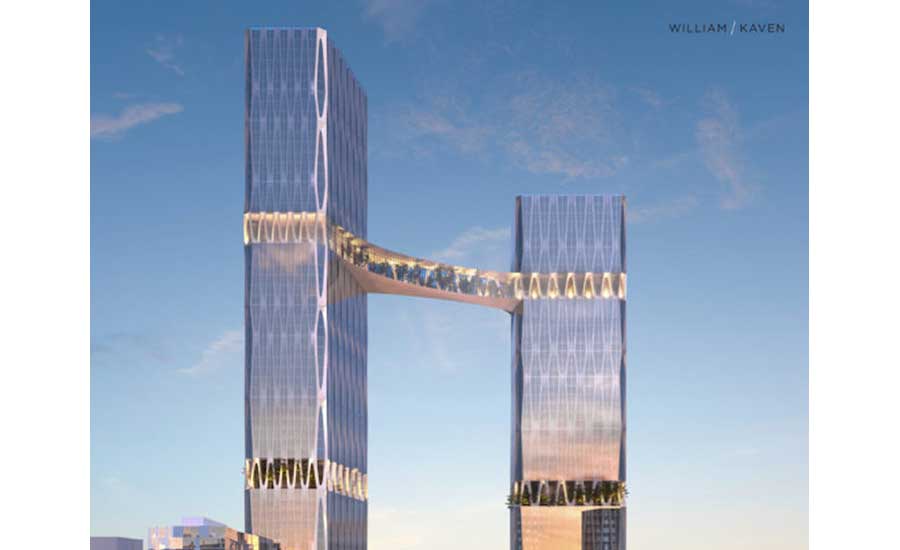When William Kaven Architecture and Kaven + Co. proposed plans for a Portland Pearl District site that includes the tallest tower on the West Coast, complete with a glass-enclosed botanical bridge soaring 680 ft in the air and crossing 236 ft to an adjacent tower, it may have been nothing more than a highly publicized way to get Portland’s building height restrictions in the news.
The site, a U.S. Postal Service headquarters building slated for demolition and redevelopment, has given Kaven cause to show off the 970-ft building design, which would rise taller than the tower of the Wilshire Grand in downtown Los Angeles, the current West Coast leader in height. It has also given him dramatic opening salvo in a prick at the city in what could be nothing more than an effort to get Portland building height restrictions in the public’s mind.
The Pearl District two-tower plan has garnered attention, but comes in at about double the height restriction in place for the area. Kaven took to the Daily Journal of Commerce to write an opinion that says “much of Portland’s zoning is characterized by height restrictions that drive developers to build low-slung, inexpensive, wood-framed buildings. There is a glut of cheap, five-to-six-story projects built recently that are unlikely to stand the test of time. Not only are these stick-framed buildings aesthetically unappealing, but they present significant dangers.” He lamented fire dangers during construction.
Kaven says that as Portland continues to grow it needs to wean itself off traditional building and development models and move toward solutions that remove cars as a necessary part of the living equation. Building towers, he says, especially in places such as the Pearl District already full of residential opportunities, gives Portland a real chance at drawing a major business player and allowing people to “live and work in a dense environment and walk everywhere, including to a train station that is only blocks away.”
This, he says, means the Pearl District represents the prime location for Portland to build its largest building. And, while we are at it, he wants something truly “iconic.”
“The city of Portland, currently, is devoid of iconic buildings—at least any that a tourist or foreign architect might recognize,” he writes. As millions of people flocks to major towers, memorials, skyscrapers and art institutes, Kaven says now is the time for the Portland City Council to reshape the 2035 plan and demand denser, taller development. “It would be an abomination to limit the 14 acres of the USPS site, in the heart of the city of Portland, to any height, thereby potentially missing the architectural opportunity of our lifetime.”
Follow Tim Newcomb on Twitter at @tdnewcomb.

